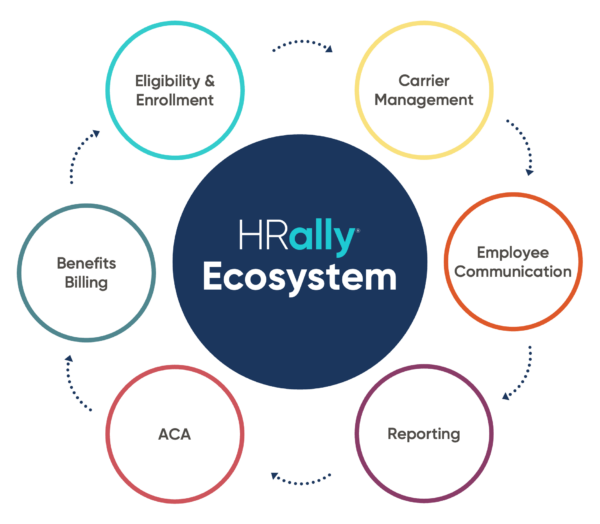The Role of Data Analytics in Benefits Management
February 20, 2024 | Winston
Employee benefits are a great tool that companies can use to attract talent, make their current workforce feel more valued, and revamp employee engagement. However, sometimes employees either aren’t taking advantage of benefits, need them to be communicated better, or think similar offerings would appeal to them more. That’s where data analytics can help. By analyzing data collected from benefits administration platforms, you can determine which offerings your workforce is taking advantage of and which could be allocated elsewhere. Keep reading to learn more about the role of data analytics in benefits management.
Utilizing an Automation Platform
One of the best ways to collect data during enrollment periods is through an automated platform or benefits administration support tool like our HRally® software. HRally® performs several helpful functions to aid HR teams in their benefits administration practices and data collection. Accurate and timely analytics are just some of the many perks that clients can expect from utilizing the platform.

Regarding reporting, HRally® gives HR and benefits professionals access to an extensive reporting library and delivers dependent and beneficiary data. Alternatively, benefits calculators and support tools are available for employees and access to communications. By combining these insights with all of the offerings from HRally®, your team can make more informed decisions about enrollment and benefits offerings moving forward. Now, let’s look at some of the ways data analytics can help enlighten professionals on their workforce benefits!
Streamline Offerings
Data analytics can help you streamline your benefits offerings so your company only pays for the benefits your team truly values. Through analytics, you can uncover what benefits employees are enrolling in the most and which offerings you can even disinvest in. By looking at these offerings more closely, HR can also determine what to showcase to potential new hires based on what other employees with similar demographics find value in.
Another way that data analytics can streamline offerings is its ability to highlight some lapses in benefits communications. Too often, in larger corporations especially, some employees need to be made aware of certain offerings that they may have enrolled in had they known about them. By analyzing data, it’s easier to determine which benefits need to be communicated more clearly in the future.
Effective Data Collection
Now that you know the benefits of data analytics, you may be wondering about the best practices for data collection. Luckily, there are a few ways to conduct effective data collection:
-
- Annual Engagement Surveys
Determine when the best time to collect engagement data from your organization would be and take the steps towards accomplishing it. For some, it could be at the beginning of the year, yet for others, the best time may be whenever busy workloads wind down and when employees feel more inclined to complete the survey. - Open Enrollment (OE) Statistics
You may be able to utilize OE statistics collected during enrollment to inform your benefits decisions. This would take place after the OE period, yet the data acquired can help your team gain insights into offerings and engagement for the following year. - HR Automation Platforms
Again, an HR automation platform can be a game-changing tool for many, including its benefits for data collection. For example, our HRally® platform automatically collects and distributes data on open enrollment and year-round offerings to help HR professionals stay up-to-date with the wants and needs of their employees.
- Annual Engagement Surveys
If you’re a current HRally® user, then you can take advantage of data analytics to determine what your benefits package and communications should look like in the future. Contact our sales team if you want a more in-depth data analysis experience through our platform offerings!
Disclaimer: This content is strictly informational and should not be used as specific advice on insurance products, legal, accounting, and/or tax related matters. Insureds should always contact the appropriate licensed professional for their insurance, legal, accounting, or tax needs.